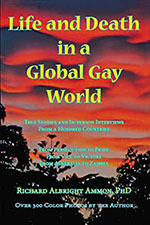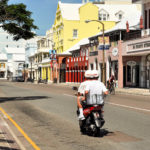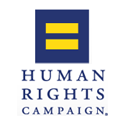By Richard Ammon
Also See:
Gay Ireland News & Reports 2000 to present
Gay Ireland Photo Galleries
Limerick
According to the gay Ireland web site and the opinions of some people in Cork—including the two gay farmers we met—there is supposedly no gay life in Limerick.
But a couple of questions asked at an Internet café in Limerick were cheerfully responded to by a pretty short-haired blonde attendant. “Oh yes,” she said without delay, “there is gay club called Yum Yum just two blocks down this street; and there’s a gay restaurant on the next turning right.” She was quite sure of herself so I followed her directions and found myself two blocks later with no visible pub and no discernible restaurant.
The White House ‘restaurant’ turned out to be a straight pub where I asked two women chatting up each other if they knew whether this pub was a mixed place. “I think it used to be several years ago but not any more,” she offered with a pleasant smile. From the bar tender I heard that the Yum Yum was a Friday-only club at the hotel around the corner.
Sure enough, at the Glentworth Hotel from 11:30 PM till about two in the morning every Friday night was lesbigay night. The cheerful desk clerk also offered that another club occurs at a disco upstairs from the Savoy cinema every Sunday late night.
In addition to getting oriented, I was impressed by the casual and non-judgmental attitudes of these straight locals who appeared quite friendly and willing to help me out–a far cry from the stereotype myth of sexually uptight Ireland.
So there is some gay life in Limerick—of course. In a city of 52,000 there are surely some pink folks around, but how many are brave or willing to show up in public is another matter. Not surprisingly, the younger gen-x and gen-y guys and girls go for it, for the music, the beat and the comradeship. Before I left the non-gay White House pub, the same pleasant straight woman told me my best bet was to call the Gay and Lesbian Switchboard. So apparently that service is well know in the city, another good sign of a rainbow pulse in downtown Limerick.
Checking the directory in GCN, I saw thirteen venues and services for gay Limerick, including the Gay Switchboard Limerick and the Lesbian Line Limerick. There are two gay university groups. Other support groups are for transsexuals and for youth; another group is the fortnightly Dining Club. OutFun is a social gathering for ‘alternatives to the scene’. Of importance are the Limerick AIDS Helpline as well as the Red Ribbon Project. The choices for party/disco venues are limited (according to GCN) to the monthly Glentworth party, the Savoy disco and a third bash called Cosmo held at the Vintage Club.
Main Street, Limerick
Along the main drag of O’Connell Street after 7PM young people (straight? gay? in-between?) start to invade the fast food eateries, ice cream shops, and sidewalks in their sloppy outfits of baggy jeans, oversize sweatshirts with wrinkled T-shirts hanging out and wearing clunky black shoes. It seemed their dress code was anti-style. Many of them were loud and acted goofy. The boys sported the popular haircut that’s shaved around the edge with a longer saucer of hair on top. Some of them looked as if they had done it at home in a mirror and the result was less than flattering.
Across the main street from the King George Hotel disco was St Augustine’s RC church. It was September 11, 2002, which occasioned a commemorative service. Inside the place was packed. A large hand-sewn American flag hung on one wall behind a tall wooden cross-hung with a white drape. Below the cross there were hundreds of smaller Styrofoam crosses pegged into an earthen mound. High on another wall was a large white cloth dove silhouetted against a blood red background.
On the other side of the main aisle, hundreds of votive candles flickered in red white and blue glasses. An adjacent TV monitor displayed a slide show with hundreds of faces (Irish or Irish descent?) of people killed in the terrorist attack. The congregation sang hymns like Amazing Grace; homilies were intoned asking to relieve humanity of its prejudices. More prayers were offered into the trust of Mary or Jesus. In front on the altar were clergy, police and firemen in their uniforms facing the congregation. It was a touching and unexpected ceremony. I had forgotten how strongly the Irish felt toward the USA. Considering how many millions of families had immigrated to America over the past hundred and seventy years—including the ancestors of three US Presidents–I should not have been surprised.
Galway
It didn’t take long to find signs of gay life in Galway. I stopped to buy a copy of the Irish Times at a downtown news stand and close by were recent issues of Attitude magazine and Gay Times (both from London), Out (from USA) as well as Gay Ireland magazine (Gi). Checking the listings in GCN newspaper, there were sixteen gay and lesbian venues, groups and services in town, two bars, three cafes, help phone lines, support groups and HIV care groups. A popular after hours club was called Bubblelove (n0w called Gaire). As we discovered over the next couple of days, eight of the venues were lesbian focused or lesbian owned.
One evening we stopped by one of the lesbian-owned bar for men, Zulu, and talked with one of the bartenders named John. It turned out that, without knowing he worked at Zulu, I had called him earlier in the day requesting a room. As we spoke at Zulu he said he had been the manager of the Rainbow GuestHouse which had closed recently because he lost the lease. He said he intended to reopen again somewhere else after he returned from a vacation in the Canary Islands.
Zulu bar is smallish place with cozy but unimaginative interior; colored lights on ceiling, seating for a dozen; the atmosphere is casual, quiet, friendly and definitely local. Meeting people was easy—you just start talking and they cheerfully talk back, especially when they hear a foreign accent.
I chatted with a man named Phil about this year’s Gay Pride weekend in Galway. It was a small parade, some parties, flags and lots of drinking of course. It came through town to the neighborhood near the queer bars Zulu and Strano a couple of blocks away (both are owned by lesbians). He thought Galway was friendlier than Cork and much friendlier than Dublin, although he had met his boyfriend at Taboo in Cork.
Walking from Zulu to Strano (now changed to Wildes) we stopped at the non-gay Monroe’s historic pub. The sound of music and the smell of pizza coming from the kitchen attracted us. The place was packed with men and women, some children—and lots of beer flowing. The music was provided by a quartet of red-cheeked middle-aged men with guitars, banjos, a flute, tambourine, hand drum and four hearty Irish tenor voices. The sound of Irish folk music is irresistibly engaging and we were happily captured for an hour. We also chatted with a handsome Japanese student who was in Galway for three months learning English. The crowd was very cheerful–laughing, talking and drinking. But the only dancing happened with two women who could not resist the engaging rhythms.
Strano was much quieter. It’s Galway’s most popular lesbian bar, a homey watering hole for the locals. From the outside, it appears that style is not important here but community is, as nearly everyone inside was huddled in groups with friends busily chattering away. As the only men in the place for a while, we felt welcomed by some smiles but we left shortly afterwards.
Galway Women
The highlight of our visit to Galway was a visit with the two women who own and operate the Side by Side B&B, a women-only place in Rahoon district of Galway.Located along a tidy street of houses with hedges, flower beds and manicured lawns Side by Side is a two story white house with six guest bedrooms. We met with the owners Berni and Sally. Both were cheerful, energetic and welcoming to us as we ‘invaded’ their feminine territory. Over tea and crumpets I queried them about their lives in Galway.
RAA: I am told that lesbians are the major gay business entrepreneurs in Galway. This is the opposite of most cities. Why is this so in Galway?
Berni & Sally: For several reasons: (1) lesbians saw early on (ten or more years ago) the value of the pink pound and moved to capitalize on it in a way the men did not; they just did not seem visibly motivated toward business enterprise. There were no places for women to gather whereas the men had, then, a bar and they had the cruising grounds by the sea. So we had to start our own.
(2) Women were sincerely moved by caring for their sisters to take the risk to create new venues. Also, I think the women were not as avaricious in that they did not envision making a large profit as they supported a women’s business venue; men seem to be more profit–minded, more commercially defined and women not as much.
(3) Historically lesbian women have earned less money and tended to go local for their holidays whereas gay guys were better paid and could afford to go off to Dublin or London. So Galway has both of Ireland’s women-only B&B’s, Malaya and Side by Side. People come here because it’s a beautiful area with the West Coast and Connemara wilderness.
RAA: So Galway’s gay history goes back quite a few years?
B&S: Oh, yes. There have been known gays in Galway for generations—in all of Ireland for all of history I suppose. But the major break came in the early 90’s when homosex was decriminalized and protective laws were enacted. Since then there has been a constant flow of energy in the form or organizations, clubs, early pubs such as Neachtain. It’s the oldest gay (male) place (about 20 years) which is still extant; it’s patronized by the older crowd.
And we’ve had a Gay Pride festival for about 10 years which goes right through the center of the busiest pedestrian street and in front of all the mainstream shops with all the mummies and kids shopping. New venues and events keep appearing such as Club Outrageous which happens once a month and is very popular with young people, gay and straight because it is an ‘alternative’ happening with an ‘anything goes’ attitude; There are lots of bizarre costumes at these events. Bubblelove is new. So now people feel they don’t feel they have to go out of town to have fun.
RAA: What’s it like to come out as a lesbian in modern Ireland?
Berni: It’s very different now since I came out about eight years ago. I was in my late twenties and was hesitant—it was not the easiest thing for me to do then. Now I see girls come out younger, especially in the cities. I think its still true that women in the rural west tend to come out later than in the cities.
RAA: Why is coming out easier now?
Sally: For one, the church has lost its power over virtue. There is so much more support now as well as more publicity about homosexuality. Women are more empowered partly because they earn more money now, and the younger ones are more courageous and daring and defiant of tradition than I was. Ireland used to be so Catholic and superficially virtuous and now it’s more secular with much fewer pretensions. Galway is not much for attitude and posing—if you are gay, well that’s the way it is and so get on with it. It doesn’t have to be loud or political.
RAA: I understand you are married and you are going to a lesbian wedding this week.
Berni: Yes, we had a ceremony of commitment three years ago with all our friends. Sally dressed up in a tux and I wore a white formal dress. We were the first lesbian couple to get married in Galway.
RAA: Do the guys have such weddings?
Sally: This coming October there will be the first gay men’s wedding–and I can tell you they are really fussing over their outfits to make the occasion perfect. We’re especially happy to see this because there’s an impression that gay Irish couples don’t last very long. Perhaps because so many visible gay guys are young and are just getting around, or perhaps they are students and not into settling down. Homophobia was strong in the past and older guys didn’t’ even think about marriage or ceremonies.
Our chat ended just as the heating oil truck arrived and sally went out to talk with the driver, a burly guy, about furnace things and fuel prices. With hugs and smiles from the girls we departed from the comfort and comforting atmosphere of their busy B&B home.
A note about Irish B&Bs
As we drove around the country staying at non-gay B&Bs our hosts were very amicable and accommodating to us as a male couple. At none of these homes—some nestled in little villages with red, green, yellow, orange or blue storefronts; others sitting elegantly on a hill overlooking an ancient abbey or a sweeping vista of the ocean–at none of these places did the hosts show the slightest hesitation of our sharing a double bed. Several hosts actually asked us if we preferred a twin or double-bedded room. Either they were oblivious or have seen so many tourists on their doorsteps that such arrangements are common and hardly worth the wonder. I’d like to think it was, arguably, social progress.
Each night was followed in the morning by a gut-packing Irish breakfast: juice, 2 bacon strips, 2 sausages, eggs, grilled tomato, black pudding, toast, cereal, coffee or tea and fruit. When you’re finished with that you need a good slog on the bogs!
Some of these home-stays and small hotels are located in historical places . One calm moonlit night we nested in the Beach Hotel at Mullaghmore harbor on the coast west of Galway. In front of the hotel was the picturesque marina where years ago Lord Louis Montbatten, the last Viceroy of India, berthed his motor boat. He was uncle to the current Prince Phillip and great uncle to Prince Charles. Montbatten had survived many military campaigns and oversaw the upheavals of India’s independence in 1948 and the terrible religious civil war that followed.
In 1974, Montbatten was out on a peaceful fishing expedition with his crew and friends when an IRA bomb exploded aboard and killed nearly everyone. They were only a short distance from the harbor and rescue boats rushed out from here but to little avail.
Nearby to our hotel can be seen Lord Louis’ castle Cassieford, which came into his family through his wife Edwina. The tall stone edifice can still be seen easily from a distance like a Disney fairy tale mirage on the nearby hill. A businessman now privately owns it.
On the outskirts of the city of Sligo there’s another comfy B&B with colored shutters not far from the grave of W.B.Yeats, the Nobel Prize Irish poet. The graveyard (left) surrounds the church in Drumcliffe where Yeats’ grandfather was pastor. It sits in a lovely grove of tall evergreen trees in view of the looming Ben Bulben Mountain where Yeats loved to wander.
















